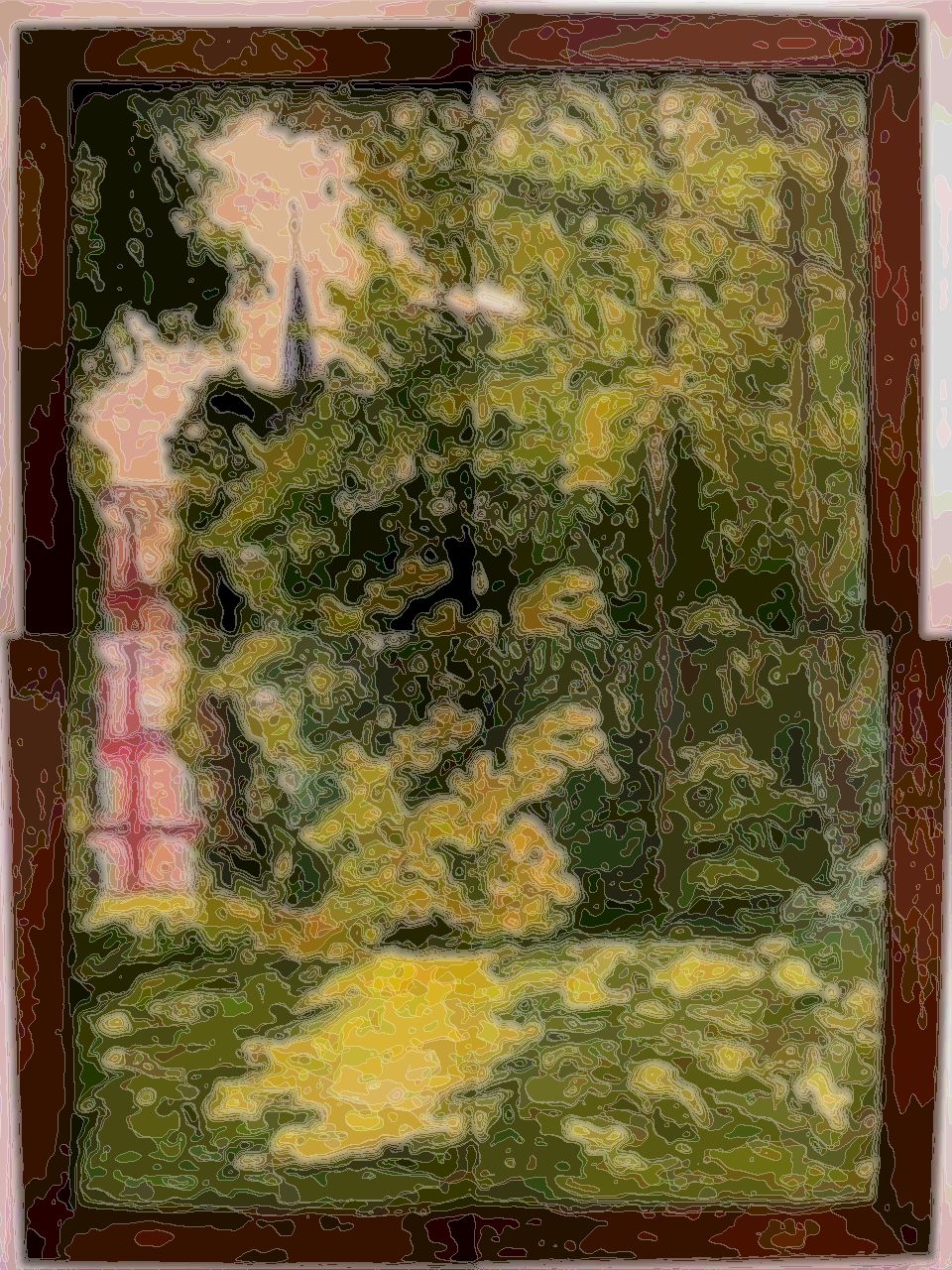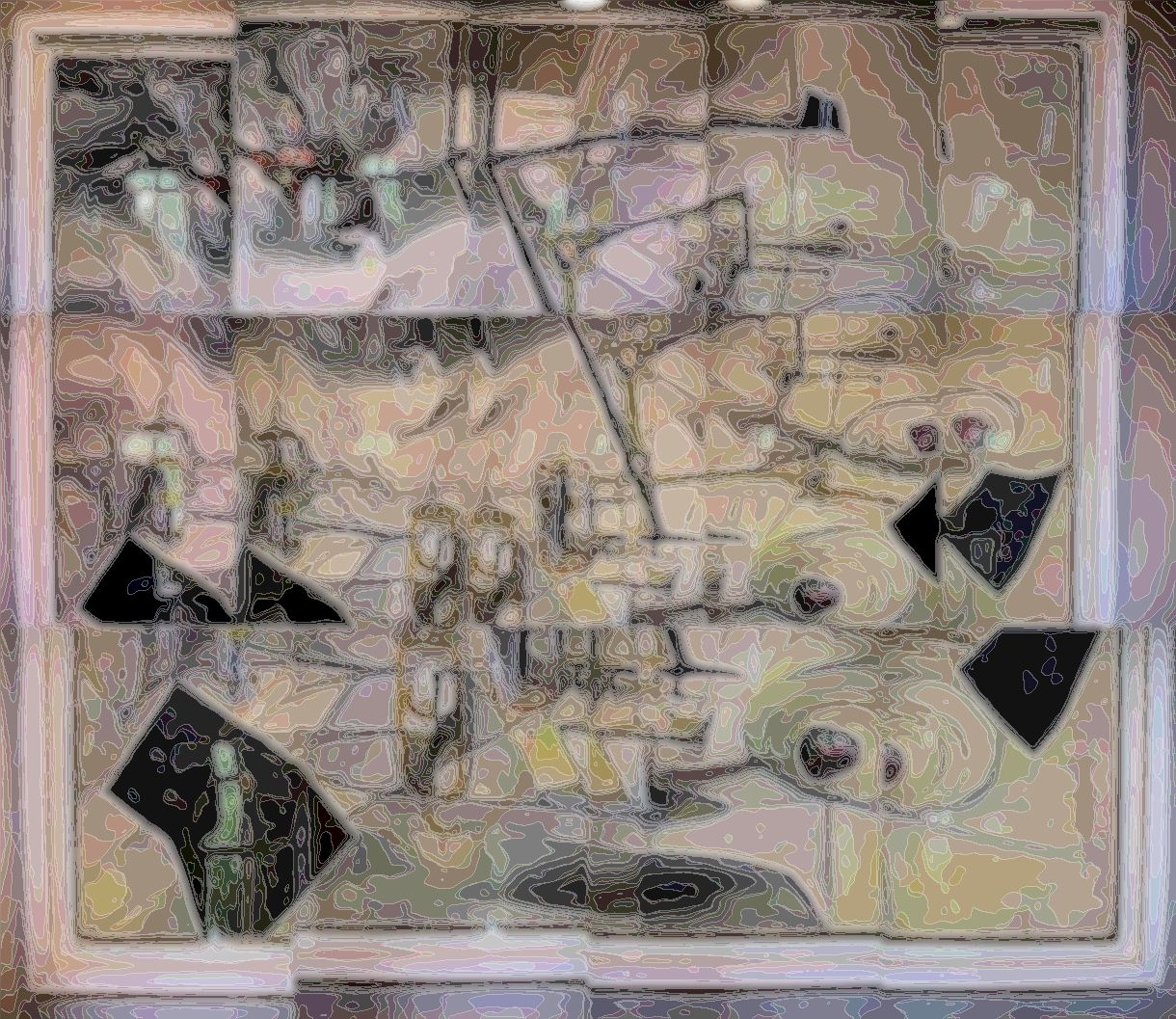
Virtual Painting 559
2020.06.25

Virtual Painting 560
2020.06.25
2006.06.25
what value does art have in the world?
Sure art has the power to change people. For example, I've executed several artworks that have changed people from liking me to disliking me.
2006.06.25
what value does art have in the world?
Wednesday, July 30, 1980
They were having a costume auction at Sotheby's at 1:00 and one of the things in the auction was a costume I'd done in the sixties for the Dalton twins--the "This Side Up" dress. Sotheby's just had it thrown in with the other clothes, they didn't realize I'd done it. If someone had put it in a frame it could have sold for $10,000 but somebody's probably going to get it for $25. It's the last thing in the auction.
--The Andy Warhol Diaries
I guess art in a frame changes everything!
2003.06.25
top 5 movies with great architecture or regarding architecture
Did you know that when a depiction of Boullée is shown in The Belly of the Architect, the image is actually that of Piranesi?

Just over a year ago there was a display within "Theatrics Times Two" at www.quondam.com that compared the symmetry of The Ruling Class with the symmetry of The Belly of the Architect. I think Greenaway was much influenced by The Ruling Class.
2002.06.25 13:18
Re: WTC Excavation Panorama
John wrote:
We were in the area yesterday looking for studio space with an intention to get in on the only NYC action that counts in avant-garde and putrid architecture, er, real estate.
Once we get set up with a view overlooking the sacred site, we'll be issuing a manifesto per week, tear-stained and lurid, so set your spam-eliminator on high alert.
Steve asks:
John, how long do you anticipate the whole 'exploitation' will take (seriously)? I imagine work at the WTC site will last several years. I'm also wondering how long it will take for the 'hole' to be filled and more or less covered (although there will still be much building activity underneath and above). It will be interesting to see how wider (ie, pieces in the press, etc.) 'perception' of the site changes as the site gets filled.
Kind of ironic that those visiting the site now often say there is nothing to see, when in fact they are seeing things that haven't been seen in years.
I'm reminded of a very nice aerial photo of lower Manhattan when the towers were almost complete that appeared in Life magazine (probably sometime 1970 or 71 or 72). I have the pages, but I used them within one of a series (a dozen I think) of artworks (1993) that 'reenacted' Duchamp's The Large Glass (The Bride Striped Bare By Her Bachelors, Even). In The Large Glass the lower section represents the male (sex appetite) while the upper section represents the female (sex appetite). In the one where I utilized the Life magazine WTC Towers photo, I placed it alongside an image of the (in)famous Space Shuttle toilet (that didn't always work properly)--these were in the lower section depicting erections and beyond. The top section has an actual but cloud-like female nude. Once the images were in place (acrylicly transferred onto mylar), then the 'cracks' of The Large Glass were pen plotted onto the mylar.
John, you use the word manifesto to describe the forthcoming 'exploitation.' Do you see this project as perhaps a 'reenactment' of Delirious New York? (Remember I do admire reenactment.)
A week or so ago R and I were talking a little about Delirious New York. We remembered how the original cover was an image of the Empire State Building in bed with the Chrysler Building. Last Saturday night I remembered a line from the poem "I Balls" (which is an integral part of Hey, Art Picasso, How's Your Brother Dick?) that reads: "If sex isn't something to talk about you can always think of the Empire State Building in the Holland Tunnel..." Upon (an almost 20 years later reflection) I think that line is very likely, albeit subconsciously, related to the cover of Delirious New York, and making that connection now is what prompted me to think of the Dick Manifestos.
Koolhass has over the last couple of years discussed manifestos, mostly in relation to Learning From Las Vegas. He concludes that architecture manifestos are no longer written, that it is all about urbanism now. I wonder if this is true.
manifesto 1 obscure : DEMONSTRATION, EVIDENCE 2 : a public declaration of intentions, motives, or views : a public statement of policy or opinion
2001.06.25

Directly below the North Wing Pediment of the Philadelphia Museum of Art is a small glassed opening that connects to a gallery within the museum. This aperture was not part of the building as originally executed. Rather its creation occurred in 1954, and is the manifestation of a Marcel Duchamp intention, for immediately behind the opening is The Bride Stripped Bare by Her Bachelors, Even, which stands as the centerpiece of the Philadelphia Museum's Duchamp gallery.
"As soon as he was well enough, Duchamp resumed his frequent trips to Philadelphia, where the Arensberg collection was being installed under his supervision in ten spacious, high-ceilinged galleries that had been specially designed for it. One of the largest rooms was devoted to his own work. The Arenbergs had kept right on adding to their Duchamp holdings. The bought The Chess Game from Walter Pach in 1950, and in 1951 Duchamp's old school chum, Raymond Dumouchel, who had retired from medical practice and was living in the south of France, agreed to sell them the portrait that Duchamp had done of him in 1910, with the luminous aura surrounding his hand. Thanks to Katherine Dreier their collection had regained its centerpiece,The Large Glass, the great "delay" that held in suspension the nonretinal ideas of its making. Duchamp was on hand when the Glass was installed in the middle of the room, facing a doorlike window that had been cut into the wall on his instructions. The window [looks onto] a courtyard. There [is] a large fountain in the center of the courtyard, and on the other side of the fountain there were two monumental pieces of sculpture. One of them, a nude female in bronze called Yara, was by Maria Martins. (Its title referred to a river in Cuba.) Whether by accident or design (and everything we know about Duchamp suggests that it was not by accident), the sculpture was sited in such a way that you could look through the Glider element of The Large Glass. through the window, through the outdoor fountain (la chute d'eau). and see it in the background."
Calvin Tomkins, Duchamp: A Biography (New York: Henry Holt and Company, 1996), p. 389.
Yara has since been removed from its former position within the museum courtyard, thus the visual connection representing the love affair, as intimated by Tomkins, between Duchamp and Martins can no longer be experienced by the gallery visitor. Nonetheless, it is worth further noting that not only is Tomkins's visual connection identical to the experience of viewing Etant donnés: 1. la chute d'eau/ 2. le gaz d'éclairage (a Duchamp work also now in Philadelphia, but a secret project of Duchamp's until his death in 1968), but the Tomkins Duchamp-Martins connection at Philadelphia also reënacts the "sacred and profane love" theme of Jennewein's Western Civilization. That all these love themes should have occurred along the same exact axis is perhaps the greatest chance happening in 20th century art.
In any case, a clear, sunny day in Philadelphia offers one the opportunity to stand in museum courtyard and catch a faint glimpse of The Large Glass, especially the glider element. Again, one finds oneself peering through yet another Duchamp aperture.


(so-called) Birth of Venus in a Dream 3
1991.06.25
|